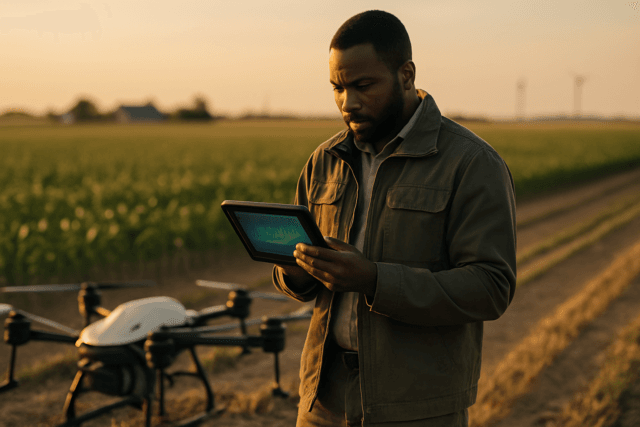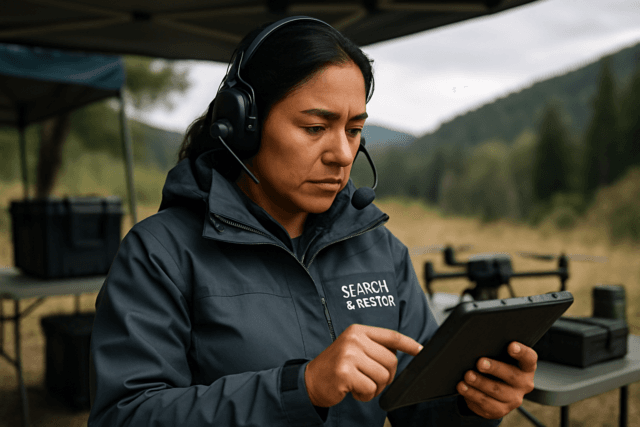The agricultural landscape is undergoing a profound transformation, with Unmanned Aerial Vehicles (UAVs), commonly known as drones, emerging as indispensable tools for precision agriculture. These high-flying workhorses offer unprecedented capabilities for crop monitoring, soil analysis, livestock management, and targeted resource application, promising increased efficiency and yields. However, this rapid adoption of technology, particularly the collection and transmission of vast amounts of sensitive agricultural data, introduces a new frontier of cybersecurity risks that demand urgent attention.
As farmers increasingly rely on these intelligent systems for critical operations, understanding and mitigating the cybersecurity vulnerabilities of agricultural drone systems becomes paramount to ensuring food security, protecting proprietary data, and maintaining operational integrity.
The Rise of Drones in Precision Agriculture and Data Dependence
Agricultural drones are equipped with advanced sensors, including multispectral, thermal, and RGB cameras, to collect high-resolution data over farmland. This data provides farmers with real-time insights into crop health, soil conditions, pest outbreaks, and irrigation efficiency, enabling data-driven decision-making. The seamless integration of drones with IoT (Internet of Things) systems, AI analytics, and cloud-based platforms has made farming more precise and productive than ever before. Yet, this interconnected ecosystem inherently broadens the attack surface, creating vulnerabilities that could jeopardize critical agricultural operations and sensitive information.
Key Cybersecurity Vulnerabilities of Agricultural Drone Systems
The proliferation of drones in agriculture has brought a myriad of cyber threats, ranging from data manipulation to direct operational disruption. These vulnerabilities can be categorized into several critical areas:
1. GPS Spoofing and Jamming Attacks
One of the most pressing threats to drone operations is GPS spoofing, a cyberattack where false GPS signals are transmitted to mislead a drone’s navigation system. This can result in drones being hijacked, misdirected, or even crashed, leading to significant operational, financial, and safety risks. In precision agriculture, GPS spoofing can distort field maps, compromise data integrity, and disrupt irrigation or planting patterns, severely impacting modern farming practices that rely on precise positioning.
Jamming attacks, a type of Denial-of-Service (DoS) attack, aim to disrupt the physical communication between drones and their ground control systems (GCS) by transmitting strong signals on the same frequency. If successful, jamming can cause drones to lose control, become unresponsive, or activate failsafe mechanisms like returning to base or landing, leading to operational downtime and potential damage.
2. Hacking and Unauthorized Access to Ground Control Systems (GCS)
Drones, particularly through their Ground Control Systems (GCS), are vulnerable to hacking and unauthorized access. An attacker gaining control of a GCS could steal sensitive data, send malicious commands, or even hijack the drone itself for purposes like spying or disrupting operations. Weak authentication and communication protocols in many IoT devices, including those integrated with drones, make them susceptible to network-layer attacks and unauthorized access. Unencrypted radio signals can also be intercepted and decoded, allowing attackers to gain control.
3. Data Integrity and Manipulation
The accuracy and trustworthiness of agricultural data are paramount for effective decision-making. Cybersecurity threats can compromise this integrity, leading to severe consequences:
- False Data Injection: Malicious actors could inject falsified data into drone systems or farm management platforms, leading to inaccurate assessments of crop health, soil conditions, or pest infestations. This could result in suboptimal resource allocation, incorrect treatment applications, or delayed pest detection, causing significant crop damage and financial losses.
- Inaccurate Decision-Making: If farmers rely on compromised data for critical operations, it can lead to inefficient practices, wasted resources, and ultimately, reduced yields. Data integrity is vital for informed agricultural decisions.
4. Malware Injection and Botnets
Drones can be susceptible to malware or viruses. A “botnet drone” could allow malicious actors to hijack drones, leading to a loss of control, using them for spying, or disrupting their functions. Botnets can also intercept data transmitted between drones and farm management systems.
5. Data Privacy Concerns and Sensitive Data Exposure
Drones collect vast amounts of sensitive farm data, including crop yields, soil conditions, livestock movements, and proprietary farming techniques, which are valuable to competitors or malicious entities. A breach of confidentiality could expose critical information, potentially leading to legal consequences. Concerns about the privacy of farmers’ information are growing as precision farming increasingly relies on sensors, drones, and data analysis software. Drones equipped with cameras can also capture images of private property, raising privacy invasion concerns for farmers and nearby residents.
6. Supply Chain and Third-Party Risks
The interconnected nature of modern agriculture means that vulnerabilities in one part of the supply chain can impact the entire system.
- Third-Party Software and Hardware Vulnerabilities: Agricultural technology often relies on components or software from various vendors. Vulnerabilities within these third-party elements can expose the entire system to risks like remote code execution or privilege escalation.
- Reliance on Agricultural Technology Providers (ATPs): Farmers increasingly rely on ATPs for data analysis, cloud storage, and other crucial services. If these providers suffer a data breach or cyberattack, farmers’ sensitive information can be compromised.
- Foreign-Manufactured Drones: Discussions around foreign-manufactured drones highlight potential national security and espionage risks within the supply chain, with concerns that such drones could compromise the U.S. food supply or transmit sensitive agricultural data to foreign authorities.
7. Weak Authentication and Communication Protocols
Many IoT devices, including those integrated with drones, are resource-constrained and may lack robust encryption and authentication mechanisms. This leaves them vulnerable to network-layer attacks and unauthorized access. Unencrypted radio signals used by drones can be easily intercepted and decoded.
Broader Implications of Compromised Agricultural Drone Data
The consequences of successful cyberattacks on agricultural drone data extend far beyond individual farm operations.
- Economic Losses and Food Security: Cyberattacks can lead to significant financial losses due to crop damage, disruption of critical farming operations, and increased operational costs. In a worst-case scenario, widespread attacks could jeopardize food security by disrupting the agricultural supply chain and food production systems.
- Loss of Trust and Competitive Advantage: Incidents of data breaches or system compromise can erode trust in digital farming technologies, discouraging further adoption of beneficial innovations. The theft of proprietary data or farming strategies can also lead to a loss of competitive advantage for individual farms.
- National Security Concerns: The potential for foreign manipulation of agricultural systems through compromised drones raises national security concerns, particularly regarding food supply chain integrity.
Mitigating Cybersecurity Risks
Addressing these vulnerabilities requires a multi-faceted approach. Recommendations include regular security audits, continuous monitoring, vulnerability assessments, and ensuring firmware and software are updated with the latest security patches. Secure communication protocols and encryption for data at rest and in motion are also critical. Farmers should also inquire about the security features of devices from technology providers and be aware of third-party risks associated with agricultural technology providers. The development of anti-spoofing models and real-time detection mechanisms can help mitigate GPS spoofing attacks.





